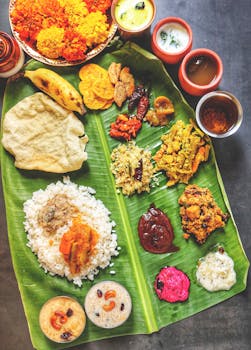Dining is more than just eating—it’s a window into a country’s culture, values, and history. While food brings people together, the way we eat, what’s considered polite, and even how we handle cutlery varies widely across the globe. Whether you’re exploring the vibrant sushi counters of Tokyo or enjoying a laid-back brunch in Toronto, understanding local etiquette can elevate your experience and show respect for the culture.
Here’s a tour through some fascinating (and often unexpected) dining etiquette rules from around the world.
🇯🇵 Japan: Grace in Every Gesture
In Japan, especially in cities like Tokyo, dining is a ritual. From high-end sushi restaurants to family ramen shops, etiquette is taken seriously.
Chopstick Manners Matter: Never stick chopsticks upright in a bowl of rice—it resembles a funeral tradition.
Slurping Is Encouraged: Slurping your noodles is actually a compliment to the chef and shows you’re enjoying the meal.
Respect the Pouring Ritual: When drinking with others, pour their drinks and wait for someone to pour yours.
Clean Eating Space: Don’t pass food from chopstick to chopstick—it also mimics funeral rites.
A simple “Itadakimasu” before eating and “Gochisousama deshita” afterward goes a long way in showing gratitude.
🇫🇷 France: Dining with Elegance
Dining in France is a refined experience, steeped in centuries of culinary tradition and etiquette.
Don’t Split the Bill Casually: One person typically treats or pays. If splitting, it’s best discussed beforehand.
Bread on the Table, Not the Plate: Place your bread directly on the tablecloth, not your plate.
Hands on the Table: Keep wrists (not elbows) visible and resting on the table edge.
Minimal Customization: Asking for substitutions or “on the side” orders is frowned upon—it implies the chef’s dish isn’t good enough.
Although tipping is included, rounding up or leaving a few extra euros is a nice gesture for excellent service.
🇮🇳 India: Food as a Sacred Tradition
In India, meals are rooted in tradition, hospitality, and a deep spiritual connection to food.
Use Your Right Hand Only: The left hand is considered unclean in traditional settings.
Eating with Hands Is Encouraged: Especially for traditional dishes like biryani or dosa—touch enhances flavor and connection.
Always Wash Before and After Meals: It’s both hygienic and a cultural expectation.
Don’t Waste Food: Take only what you can finish—it’s seen as respectful to the host and to the food itself.
Bonus: In parts of Southern India, meals are served on banana leaves, and folding it after eating sends a cultural message—up or down based on the occasion.
🇨🇦 Canada: Polite and Inclusive
Canadian dining, especially in cities like Toronto and Vancouver, blends European traditions with North American casualness.
Be On Time: Canadians value punctuality, especially for dinner invites.
Tipping Is Expected: 15–20% of the total bill is standard in restaurants.
Politeness Is Key: Always say “please” and “thank you” to servers and hosts.
Shoes Off Indoors: Many Canadian homes expect guests to remove their shoes—always check when entering.
Meals are generally informal, but good manners and friendliness go a long way.
🇩🇪 Germany: Order and Tradition
In Germany, mealtime etiquette reflects broader cultural values—respect for structure, order, and efficiency.
Wait for the Toast: Before you sip anything, make eye contact and say “Prost!” during a toast.
Keep Hands on the Table: Not elbows, but definitely not on your lap either.
Punctuality Matters: Arriving even 10 minutes late for a meal can be considered rude.
Tipping Is Customary: Round up or leave 5–10% in cash—hand it directly to the server.
Cleanliness and efficiency are central—even at the
dinner table.
🇮🇹 Italy: Passion and Simplicity
Italians take immense pride in their food culture, and dining is as much about connection as it is about taste.
No Cheese on Seafood Pasta: Adding parmesan to a seafood dish is a big no-no.
Cappuccino Only Before Noon: Ordering one after a meal might raise eyebrows—opt for espresso instead.
No Doggy Bags: Leftovers are rarely taken home; food is meant to be savored and finished on-site.
Respect Traditional Dishes: Avoid requesting “fusion” or changes to the menu unless offered.
Meals are meant to be savored—don’t rush through them.
🌍 Middle East: Hospitality Above All
In many Middle Eastern cultures, including places like the UAE, Lebanon, and Turkey, hospitality is sacred.
Right Hand Only: Like India, the left is not used for eating.
Generosity Is a Way of Life: Refusing food or drink multiple times can be seen as impolite.
Sharing Is Common: Meals are often served family-style with shared plates.
Coffee Has Rules: Arabic or Turkish coffee is served in specific rituals—refusing it can come across as disrespectful.
During Ramadan, be mindful not to eat in public or in front of those fasting during the day.
🌏 Why Dining Etiquette Is Important
Whether you’re traveling for business, pleasure, or food blogging, understanding local dining etiquette helps you:
Show cultural respect and awareness
Avoid embarrassing faux pas
Deepen your culinary experience
Build stronger connections with hosts or locals
Dining isn’t just about the food—it’s about how you engage with it and those you’re sharing it with.
🧳 Final Thoughts: Eat Like a Local
From sushi bars in Tokyo to cozy cafés in Toronto, every culture brings unique rules and traditions to the table. Learning and honoring these customs is a sign of respect—and a great way to connect with locals through food.
So next time you’re abroad, pause before you pour your own drink or ask for that parmesan—global etiquette might just make your meal more memorable.





